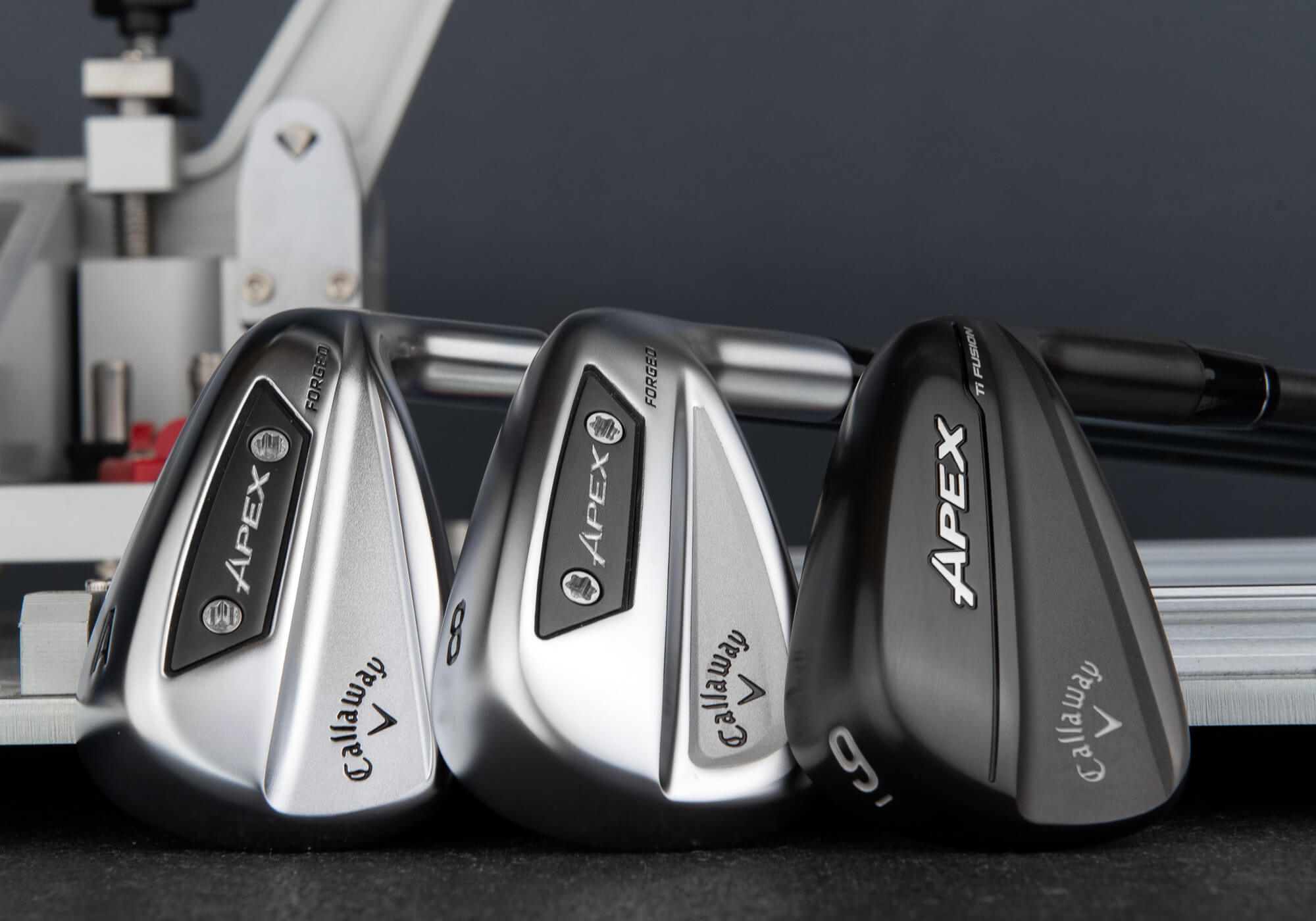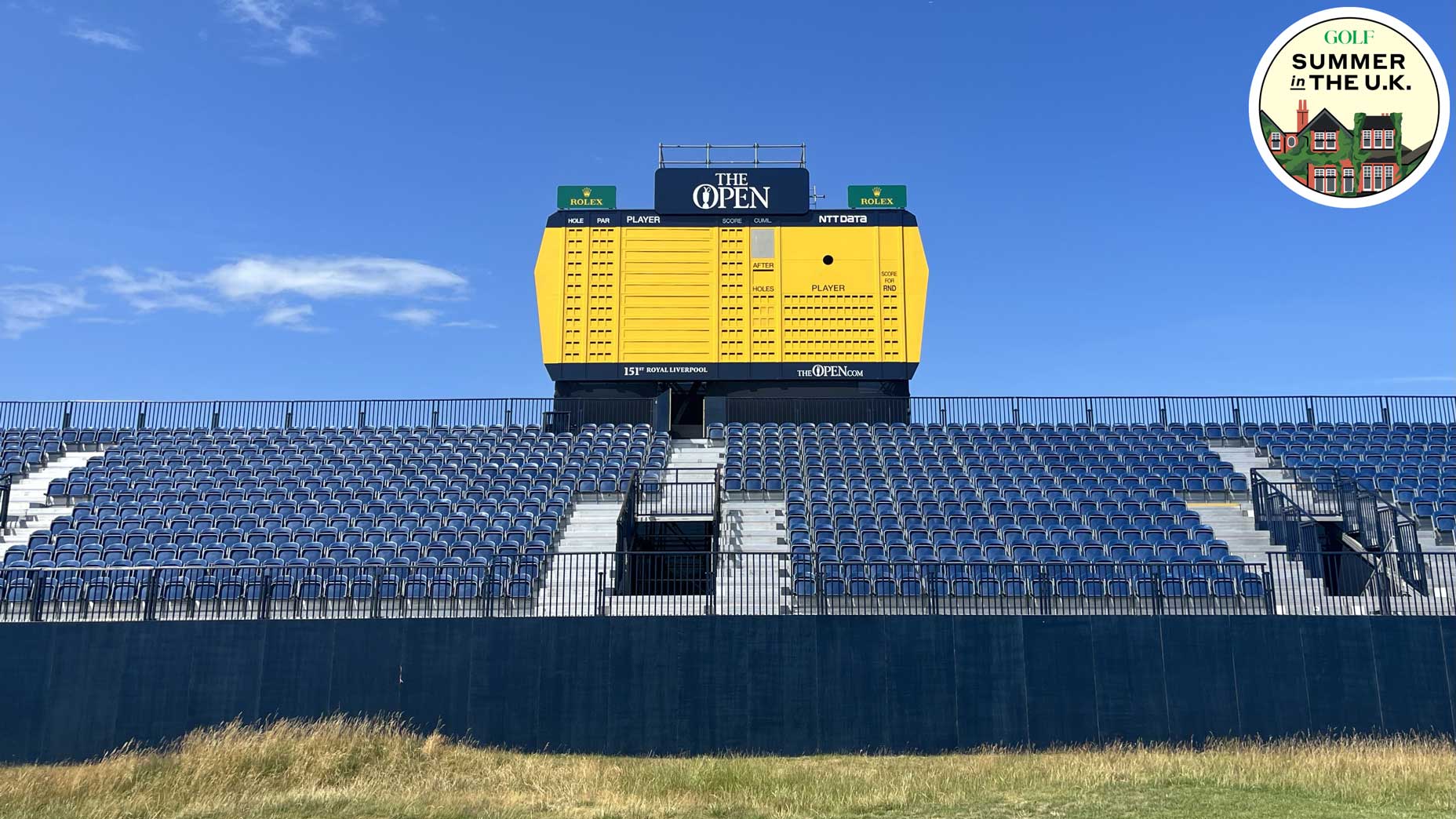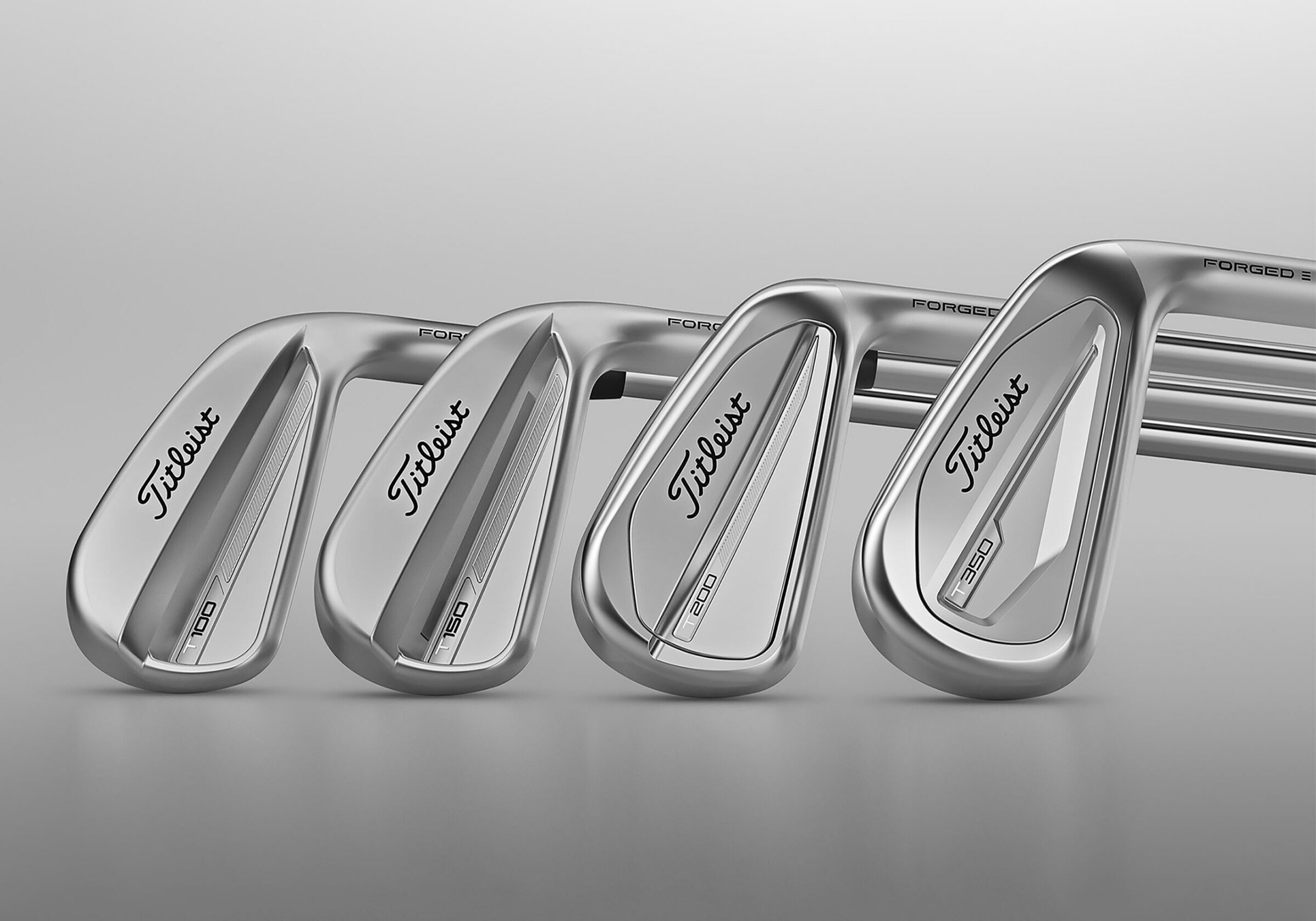The new Callaway Apex line of irons answers an age-old question:
How do you update your signature forged iron line without screwing it up?
There are two correct answers to that question. The first is simple: very carefully. That means you tweak it a little here, a touch there, but with no real changes that might make it seem too different.
The second correct answer isn’t for the faint of heart: blow it the hell up and start anew. That’s risk-reward on the level of going for a par-5 in two despite the pond in front of the green.
The new Callaway Apex irons are somewhere in the middle but leaning decidedly toward the second answer. Callaway didn’t exactly blow the old Apex the hell up and start from scratch. However, the new Apex Ai200 and Ai300 do represent the single biggest reboot to the line since it debuted 10 years ago.
That’s not to mention what Callaway has done with the new Apex TiFusion irons.
Let’s get after it.
Three New Callaway Apex Irons
Even though Callaway sold the Ben Hogan brand to Perry Ellis back in 2012, it did retain the Apex name, much to the chagrin of hardcore Hoganistas. Callaway launched its own Apex line two years later and while it may further infuriate those Hoganistas, Apex has lived up to its legendary forged name.
Callaway refreshed Apex last year, adding the Pro, CB and MB models. Today’s release is, technically, an upgrade to the 2021 Apex and Apex DCB models. The new Ai300 replaces the DCB in the game-improvement category while the new Ai200 is player’s distance all the way.
“There was a little bit of a lull,” admits Callaway Senior Product Manager Zack Oakley. “We wanted to recommit ourselves to focusing on what this player needs. We don’t feel like we or the competition has been catering to this player the way they deserve.”

Oakley says Callaway went back to the drawing board and focused on three key elements for the new generation Apex: elevated look and feel, premier performance and superior consistency.
“For the consumer, (look and feel) are their first two experiences with the product,” explains Oakley. “We’ve had a very similar design language for the better part of 10 years with Apex. We’ve modernized completely.”
The Apex nomenclature is new, too. “Ai” is essential with any Callaway product now but the 200 and 300 are purposeful. As with the Titleist T-Series irons, as you go up in number, you go up in forgiveness profile. Going forward Callaway will be able to seamlessly integrate an Ai150, 250 or 350 into the lineup.

New Callaway Apex Ai200
Callaway says it started the player’s distance category back in 2014 with the original Apex. No one called it “player’s distance” back then but there’s probably some validity to the claim. That original forged Apex had the shape better players prefer and the juice to bring distance into the equation.
The new Apex Ai200 still brings the distance but Oakley says the new design focused on those three key elements mentioned earlier.
From a looks standpoint, the new Apex Ai200 is hollow-body construction compared to the Apex 21 which was a multi-piece cavity-back. The Ai200 has a faux-blade look and a much sleeker design. It features a shorter blade length, thinner topline and narrower sole than you’re used to in the player’s distance category.

Additionally, you’ll see more than a few player’s distance irons with cast bodies and forged faces. Callaway didn’t want to go in that direction.
“We wanted to be fully forged to give players the best feel,” says Callaway R&D VP Brian Williams, “but not make any sacrifices on distance or performance.”
The Ai200 body is 1025 forged while the face is a forged 455 high-strength steel cup face. 455 steel, also known as Carpenter Steel, lends itself well to forging due to its high strength-to-weight ratio and its ability to be worked at high temperatures without losing structural integrity. It’s commonly used in hybrid and fairway wood construction as it can be made very thin and still maintain strength and flexibility, key elements for ball speed and distance.

“There was a great deal of engineering required to ensure we could fully leverage a high-strength steel face while still maintaining a soft body,” says Williams.
Performance and consistency
When you’re looking for a player’s distance iron, you certainly want the looks and feel of a player’s iron. Distance, however, has to be part of the equation.
The player’s distance recipe for distance is universal: a hot, thin face plus low CG and strong-ish lofts equals high launch and lots of yardage. The downside, however, is that’s also the recipe for low spin. High launch and the resulting steep descent angle mitigate that somewhat but low spin still doesn’t stop on the green like high spin does.

That’s where “Ai” comes in, as in Callaway’s Ai Smart Face design.
“We used (Ai Smart Face) to increase ball speed,” says Williams. “But we really had it focus on optimizing spin and launch. We wanted increased launch with high spin and steeper descent angles into the green.”
The beauty of artificial intelligence (for some reason, Callaway insists on using “Ai” in its branding while the rest of the world goes with AI) is that it can optimize a clubface for a specific type of golfer. Since a player’s distance iron golfer is more consistent and swings down on the ball more than, say, an Ai Smoke player might, AI can focus more on launch and spin and less on shot shape correction.

“We changed our testing protocols now to where we’re looking at spin consistency across the face of a certain loft, as well as through the bag,” explains Williams.
The new Callaway Apex Ai200 rounds out the package with MIM (Metal Injection Molding) weighting for optimal CG location in each iron. Callaway also includes what it calls Dynamic Sole Design, a boxier, less aggressive take on leading- and trailing-edge relief in the same vein as Srixon’s V-Sole to improve turf interaction.
Callaway Apex Ai300
Much of what we discussed above with the Apex Ai200 can be carried over to its more forgiving counterpart, the Apex Ai300. It’s the same thing, only in a larger, more forgiving game-improvement package.

The new Callaway Apex Ai300 replaces the circa 2021 Apex DCB. Like its predecessor, the Ai300 is a multi-piece cavity-back iron and sits on the “better player” side of the game-improvement category. Like its Ai200 sibling, the Ai300 features a forged 1025 body with a forged 455 steel cup face. As you’d expect, it has a larger body, more offset, thicker topline and wider sole than the Ai200, but the overall package is smaller and sleeker than the Apex DCB.
The Ai Smart Face design is also different, as its design intent is different. It’s made for the golfer looking for higher launch, more forgiveness and a little more distance help.

Callaway Apex Ai 200 and Ai300: Specs, price, availability
Both iron sets will be available in 4-iron through gap wedge. Lofts are what you would expect from each category. The game-improvement Ai300 plays off a 29-degree 7-iron while the player’s distance Ai200 features a 30-degree 7-iron.
Both sets will come in left- and right-handed models.
The Ai200 comes stock with the True Temper Dynamic Gold Mid100 shaft in regular and stiff. The new UST Mamiya HDC (High-Density Carbon) Recoil Dart 80 is the stock graphite shaft. The Golf Pride Z is the stock grip.
The Ai300 is lighter all around, with the Dynamic Golf Mid 90 the stock steel shaft, and the HDC Recoil Dart 70 the stock graphite, with the Golf Pride Z the stock grip.
The new Apex Ai irons will retail at $200 per stick or $1,400 for a seven-piece set.
Pre-sale starts Aug. 15. They’ll be available at retail Aug. 23.
Callaway Apex TiFusion
This is the part of the show where John Cleese comes in and says, “And now for something completely different …”
Friends, put your cynicism aside for a moment. The new Callaway Apex TiFusion irons are pretty darned different. This type of construction has, in fact, never been done before.
“This iron is unlike anything we’ve ever put out or anyone’s ever put out,” says Oakley. “It’s a true industry first.”

What makes it an industry first? That’s found in the name: TiFusion.
Yes, titanium has been used in iron construction before. Tommy Armour tried, and failed, with its Ti100 irons in the late ‘90s. XXIO has used titanium faces in its irons almost since the beginning. As we know with driver faces, titanium is light, strong and flexible. The problem is that it doesn’t fuse with steel. It can be brazed or swaged but both of those carry ball speed tradeoffs.
For the Apex TiFusion irons, Callaway developed and patented an entirely new and proprietary fusion process called “brazed titanium.”

“It’s a new joint construction that allows high deflection across the face for high ball speeds,” says Williams. “We’re using a forged steel body for strength, stability and weight distribution.”
Making the entire head out of titanium is impractical, according to Williams. Manufacturing is challenging and the center of gravity gets placed in undesired locations.
“With this construction, we achieve the right CG location and high stability.”

What’s the point, and who is it for?
Both are valid questions. Callaway is calling TiFusion its “concept car” product. Its $300 per stick price tag puts it in the ultra-premium category. The difference, however, is other ultra-premium “concept car” offerings are usually game-improvement products. TiFusion is most definitely aimed at the better player.
“Think of it as like the Ai150 or an Apex Pro type iron,” explains Oakley. “It’s for performance enthusiasts who want all the bells and whistles and fancy components. We’ve even given it a cool finish.”

Callaway has been working on this project for years. Like COBRA with its 3D printed LIMIT3D irons, Callaway feels it hit the Holy Grail of irons: the feel, compact shaping and spin performance of a single-piece forging with the forgiveness, ball speed and distance of a game-improvement or player’s distance iron.
As with the other new Callaway Apex irons, the TiFusion leverages Ai Smart Face technology. In this case, Ai was used to optimize a much thinner and more flexible material in titanium.
“We’re seeing consistent high launch with high spin and a pleasing jump off the face,” says Williams. “It delivers high ball speeds and consistent downrange dispersion rivaling anything we’ve ever produced.”

Will it sell?
Some? No doubt. A lot? Probably not, but I doubt Callaway is expecting to sell tons of these. That doesn’t mean TiFusion doesn’t serve a purpose.
As for performance, as the Zen Master once said, we’ll see.
The challenge with ultra-premium offerings often comes in perception. Yes, the Apex TiFusion irons are expensive. However, their existence does not mean the “average golfer” is being priced out of the game. Plenty of lower-cost alternatives are out there and they’re not being taken away from you. You can go check if you like.

Is this a plaything for the well-to-do? Maybe. Is it a true technological breakthrough? Also maybe. Will that technology eventually work its way to more mainstream products? That’s been the pattern in virtually every industry so there’s no reason to think it won’t happen here as well.
As with COBRA’s 3D-printed irons, technology does push forward. Game-improvement forgiveness and distance combined with muscle-back iron spin, control and precision in a package smaller than a player’s distance iron does have some appeal. Time will tell if Apex TiFusion delivers.

Callaway Apex TiFusion: Specs, price, availability
As with the other Apex AI irons, the new Callaway Apex TiFusion will be available in 4-iron through gap wedge for both lefties and righties. Its loft structure is a touch weaker than that of the Apex Ai200, with a 30.5-degree 7-iron.
The black Diamond-Like Coating finish is supplemented with a special Dynamic Gold Mid 115 steel shaft in a gunmetal finish. The Mitsubishi MMT is the stock graphite shaft. The Golf Pride Z is the stock grip.

The Callaway Apex Fusion will retail at $300 per stick or $2,100 for a seven-piece set.
Pre-sale starts Aug. 15 and it arrives at retail Aug. 23.
For more information, visit Callawaygolf.com.



